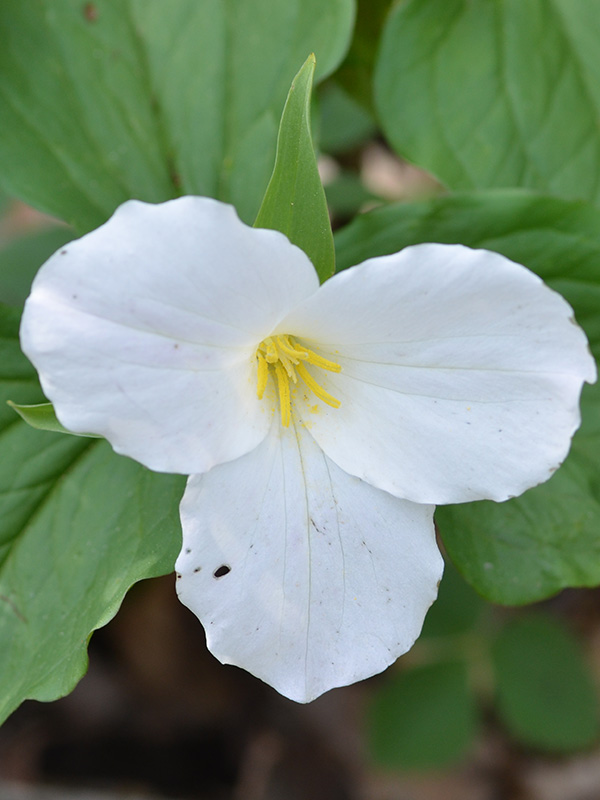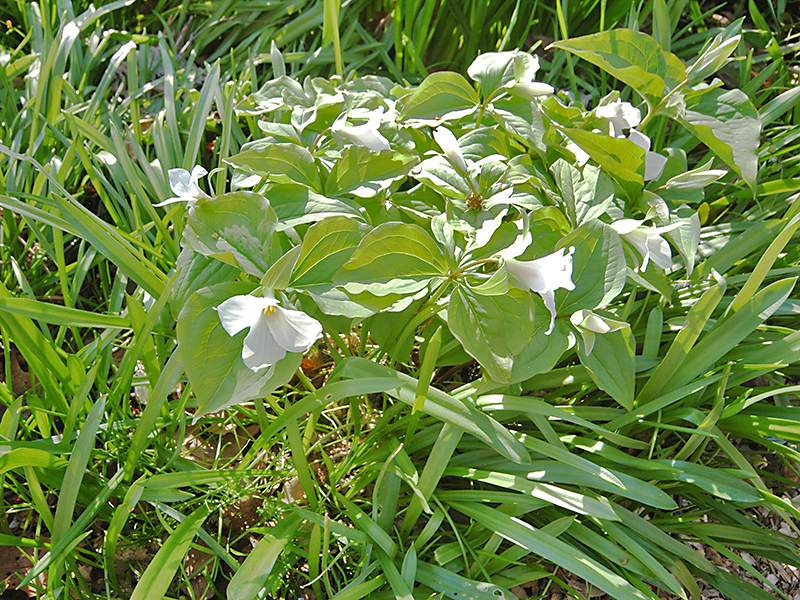| General Description | Trillium grandiflorum is a low-lying, rhizomatous perennial wildflower with three creamy white, distinctly veined petals and yellow stamens. |
| Landscape | A natural choice for woodland gardens. Also does well in a peat terrace or pocket planting in rock gardens. |
| Propagation | By careful division and replanting when leaves have died down. Can also be propagated by fresh seed, cleaned and sown 15 mm deep in a propagating mix with leafmould and kept in a cool, shady frame. Plants propagated from seed take about 5 years to flower. |
| Cultivation | Grow in part shade, in moist, well-drained, slightly alkaline, well-aerated, humusy (leafmould is preferable) soil. Tolerates sun when soil is consistently moist and shaded during the hottest part of the day. |
| Notable Specimens | The A.M. Cuddy Gardens, Strathroy, Ontario, Canada. |
| Habitat | Moist woodland and scrub, often on limestone formations. |
| Leaf Description | Green, soft, glabrous, glossy, ovate to orbicular, apex acute or obtuse, margins slightly undulate, main venation longitudinal with a network of smaller veins (reticulate), in a group of three arranged in an apical whorl spread larger than the bloom. |
| Flower Description | Solitary, terminal, erect on pedicels up to 5 cm long, three lanceolate, dark green sepals up to 5 cm long, petals are white when young, turning a pale pink, broad-ovate and 4 - 8 cm long depending on age and vigor, curving outward, undulate, distinctly veined, anthers are golden yellow. Flowers are odourless. |
| Fruit Description | Berries are scarlet to maroon, glabrous, tri-valved. |


